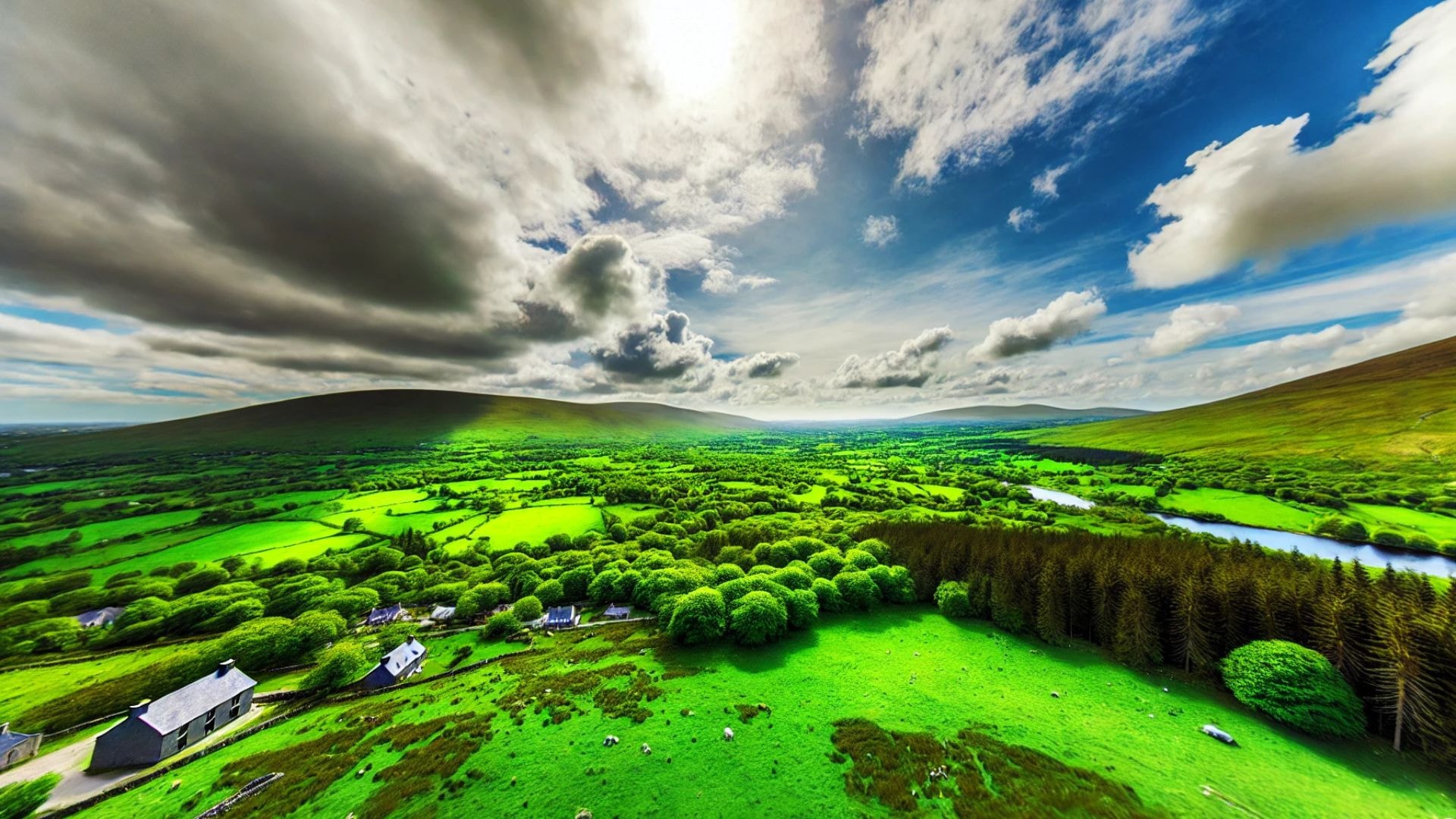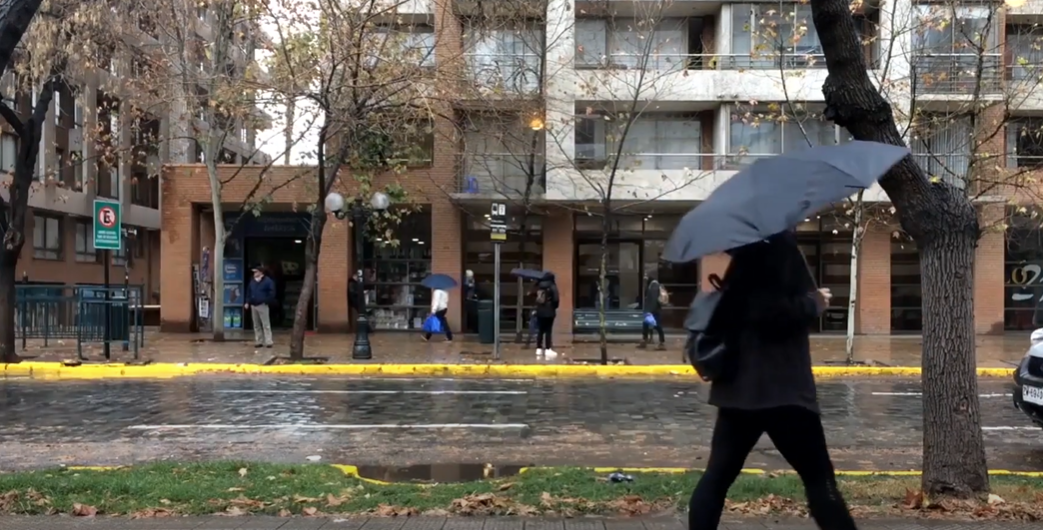
Ireland is called the Emerald Isle due to its lush green landscapes. The consistent rainfall and mild temperatures ensure the vegetation remains vibrant year-round. This verdant scenery has made the island synonymous with shades of green, reflecting its natural beauty in every corner. The nickname captures the essence of Ireland's picturesque and green countryside, celebrated in poetry and song.
When was Ireland First Called the Emerald Isle?
Ireland was first called the "Emerald Isle" by William Drennan in his poem "When Erin First Rose," written in 1795. Drennan, an Irish physician and poet, used the term to describe Ireland's green landscape, highlighting the island's verdant scenery and deep green countryside. The poem not only references the island's natural beauty but also its rich cultural heritage.
The nickname captures Ireland’s abundant lush greenery, primarily due to its temperate maritime climate, which ensures frequent rainfall throughout the year. This persistent moisture is key to maintaining the vibrant, verdant landscapes that are synonymous with Ireland. The term 'Emerald Isle' has since become a poetic symbol and a colloquial name for Ireland, often referred to as the precious stone that the country is known as the emerald. Whether you're planning to visit Ireland or exploring the west coast, understanding Ireland's weather by month can help make the most of your experience. The country's natural beauty is unforgettable.
What Makes Ireland the Emerald Isle?
Ireland is called the Emerald Isle primarily due to its lush green landscapes that cover the majority of the country. Several factors contribute to this verdant beauty:
Consistent Rainfall

Ireland experiences frequent rain showers, which keeps the soil moist and nourishes the abundant plant life. The island receives a steady amount of precipitation throughout the year, ensuring that the natural greenery thrives in almost every season. This regular rainfall creates a fresh and vibrant environment, where grasslands and forests flourish, contributing significantly to Ireland's lush appearance.
Mild Climate
Another key factor behind Ireland’s green landscapes is its mild climate. Influenced by the North Atlantic Drift, Ireland maintains relatively moderate temperatures throughout the year. Winters are not too harsh, and summers remain cool, which is perfect for sustaining plant life. This consistency in weather, free from extreme heat or cold, allows vegetation to grow continuously without significant seasonal stress, helping preserve the island's verdant look year-round.
Rich Soil
Ireland’s fertile and nutrient-rich soil also contributes to its well-deserved nickname, the Emerald Isle. The country's diverse topography, including lowland plains and rolling hills, offers ideal conditions for a variety of plants, especially grass. Farmers have long benefited from this fertile soil, which has made agriculture a significant part of Ireland’s economy, further enhancing the island’s green image.
Rolling Hills and Countryside
The final element that completes Ireland’s iconic green landscape is its natural terrain. The island is known for its stunning rolling hills and expansive countryside, which are covered with dense grasslands and patches of forest. These gentle, undulating landscapes, stretching out as far as the eye can see, create a sense of serenity and natural beauty, making Ireland not only lush but also visually striking. This unique combination of terrain and greenery solidifies its title as the "Emerald Isle."
What is the Significance of Emerald Isle Term?
The term "Emerald Isle" holds significant cultural, historical, and symbolic meaning when referring to Ireland. It captures the essence of the country’s natural beauty and serves as a metaphor for its lush, green landscapes, but the significance goes much deeper. Here are some key aspects of its significance:
Representation of Ireland’s Natural Beauty
The most obvious significance of the term Emerald Isle is that it encapsulates the striking greenery that defines Ireland’s landscapes. The rolling hills, vast pastures, and forests that blanket the country in various shades of green have become synonymous with its identity. The term evokes images of pristine and untouched countryside, making it an iconic representation of the island’s natural beauty. Exploring Ireland by car, travelers can fully immerse themselves in the scenery, appreciating how Ireland’s greenery has been celebrated in art, literature, and folklore for centuries.
Connection to Irish Identity
The term has become deeply intertwined with Ireland's national identity. The color green itself holds cultural importance for the Irish people, often symbolizing their connection to the land, heritage, and resilience. The green landscapes of Ireland have long been a source of pride, reminding Irish citizens and descendants around the world of their homeland’s enduring beauty. This connection to nature also plays a role in Ireland’s association with agriculture, tradition, and rural life, all of which are integral to Irish culture.
Symbol of Prosperity and Growth
Beyond its visual appeal, the term must-see places in Southern Ireland can also symbolize prosperity and growth. The emerald, a precious gemstone, is known for its rarity and value, much like Ireland’s cherished and rich landscapes. The lushness of the land, made possible by the country’s mild climate and fertile soil, reflects not just physical growth but also a sense of abundance and vitality. It speaks to the idea of Ireland as a fertile and bountiful place, both in terms of nature and spirit.
Cultural and Poetic Resonance
Throughout history, poets, writers, and musicians have romanticized the Irish countryside, often referring to it as the "Emerald Isle" in their works. The term holds poetic significance, symbolizing a land of mythical beauty, serenity, and enchantment. It conveys the idea of Ireland as a place of escape and inspiration, where the natural world remains unspoiled and eternally green. This has contributed to Ireland's allure for travelers, artists, and dreamers alike.
Global Symbol of Ireland
On a global scale, the term "Emerald Isle" is universally recognized as a nickname for Ireland. It serves as a brand or a symbol of the country’s natural charm, making it an appealing destination for tourists who are drawn to its iconic landscapes. Whether in tourism, literature, or cultural representation, the "Emerald Isle" has become a shorthand for the entire Irish experience, evoking thoughts of rolling green hills, misty mornings, and vibrant fields.
How the Term 'Emerald Isle' Helps Ireland's Tourism?
The name "Emerald Isle" really helps bring tourists to Ireland. When people hear it, they immediately think of bright green fields and peaceful landscapes, perfect for a relaxing vacation. This image matches Ireland's real scenery, with its soft weather and frequent rain that keep everything lush and green.
Plus, "Emerald Isle" makes Ireland sound like a magical place, which makes it more appealing as a travel spot. It's a catchy name that captures Ireland's natural beauty and rich culture, making it easier for travel agencies to sell trips and for tourists to imagine their visit.
-
Cultural charm: The phrase "Emerald Isle" connects with Ireland's history of myths and storytelling. This attracts visitors who are interested in exploring local traditions and history.
-
Marketing magic: It's a phrase that stands out in travel guides and online ads. It draws the attention of those who love nature and cultural trips.
Basically, "Emerald Isle" is like a friendly invitation to see and experience Ireland. It simplifies what's special about Ireland into a nickname that sticks and intrigues potential visitors. It's not just a smart marketing tool; it also sparks curiosity and makes people want to explore Ireland.
Also, "Emerald Isle" sounds romantic, which makes Ireland a top choice for weddings or romantic getaways. It plays on the emotional side of planning a trip, where people are looking for that dream vacation. This name helps Ireland stand out among other places and keeps tourists coming all year round.
What is the Role of Climate in Ireland’s Greenery?
The climate plays a crucial role in sustaining Ireland’s famed greenery, earning it the title of the "Emerald Isle." The country's mild, temperate maritime climate, heavily influenced by the North Atlantic Ocean, creates ideal conditions for the lush vegetation that covers much of the island. Here’s a breakdown of how the climate contributes to Ireland’s greenery:
Mild Temperatures
Ireland's climate is characterized by moderate temperatures throughout the year, with cool summers and mild winters. Average temperatures rarely drop below freezing in winter, and summer heat is generally mild, staying between 15°C and 20°C (59°F to 68°F). This lack of extreme temperatures ensures that plant life can grow year-round without the stress of severe cold or intense heat. Grasslands, forests, and other vegetation thrive in these stable conditions, contributing to the island’s continuous green appearance.
Abundant Rainfall
Rainfall is one of the most significant factors in maintaining Ireland’s lush green landscapes. The country experiences consistent rainfall throughout the year, averaging around 1,000 to 2,000 millimeters annually, depending on the region.
Western parts of Ireland, influenced by the Atlantic Ocean, receive more rainfall than the east, but the entire island benefits from this moisture. Frequent rain showers keep the soil rich and fertile, providing the necessary hydration for grass and plant life to flourish. This steady supply of water is essential for maintaining Ireland’s lush and vibrant vegetation.
High Humidity
The high humidity in Ireland, due to its proximity to the ocean, ensures that the air remains moist. This moisture in the atmosphere prevents plants from drying out, even during drier periods or in regions where rainfall is less frequent.
The combination of high humidity and consistent rainfall creates an environment in which the grasslands and forests can thrive without seasonal interruptions. This contributes to the overall lushness and vibrant green color that Ireland is known for.
Ocean Influence
Ireland’s location near the North Atlantic Ocean plays a major role in regulating its climate. The North Atlantic Drift, an extension of the Gulf Stream, brings warm water from the Caribbean region to the coasts of Ireland.
This helps moderate the climate, keeping winters mild and reducing the likelihood of frost, which could otherwise damage plant life. The ocean’s influence also contributes to Ireland’s year-round mild weather patterns, which are perfect for sustaining greenery and preventing harsh seasonal changes that could disrupt plant growth.
Consistent Growing Season
Ireland enjoys a relatively long growing season due to the absence of extreme cold in winter and extreme heat in summer. Plants, especially grass, have the ability to grow almost continuously throughout the year.
Unlike regions with hot summers that might experience drought or freezing winters that halt plant growth, Ireland’s temperate conditions create a nearly uninterrupted cycle of growth. This consistent growing season helps maintain the green landscapes that Ireland is famous for.
Minimal Seasonal Droughts
Unlike some other regions that experience prolonged dry spells during summer, Ireland's frequent rain showers, much like the natural imagery in William Drennan's poem, prevent long periods of drought. This constant supply of moisture allows the grasslands and forests to remain healthy and verdant even during the warmest months. The steady availability of water is key to the year-round greenery that blankets much of the country.
FAQs On Why is Ireland Called the Emerald Isle
1. Why is Ireland called the Emerald Isle?
Ireland is called the Emerald Isle due to its lush green landscapes and abundant rainfall. The name reflects the vibrant greenery that covers much of the country's countryside.
2. What makes Ireland so green?
The climate of Ireland is mild and moist, which is ideal for the growth of rich grasses and plants. Regular rainfall throughout the year ensures that the vegetation remains dense and vividly green.
3. Is the term "Emerald Isle" used officially?
The term "Emerald Isle" is not an official title but a poetic nickname. It is widely used to describe Ireland's natural beauty in literature and conversation.
4. Who first called Ireland the Emerald Isle?
Ireland was first referred to as the Emerald Isle by William Drennan in his poem "When Erin First Rose." The name has since become synonymous with Ireland's scenic, green landscapes.
